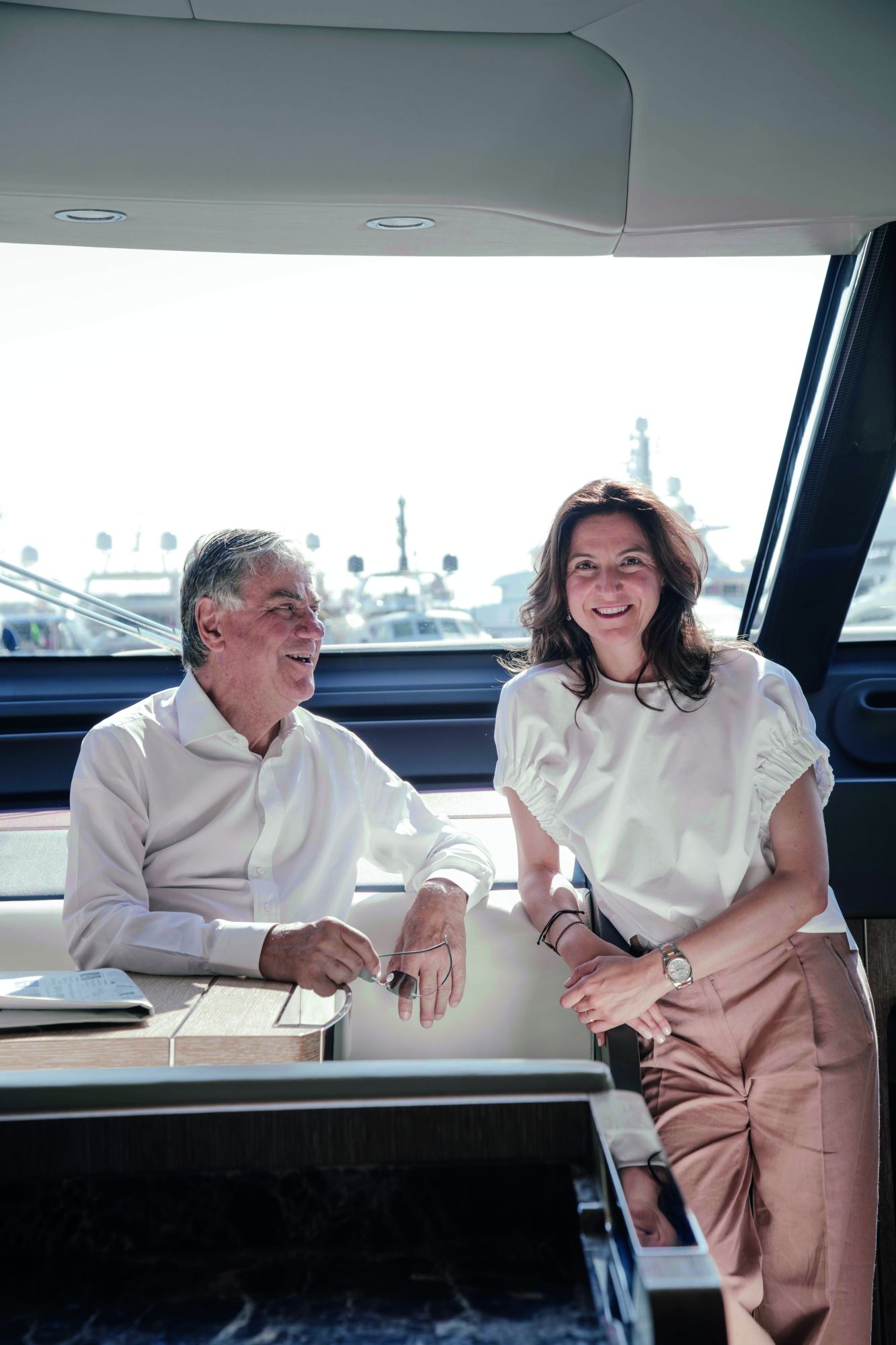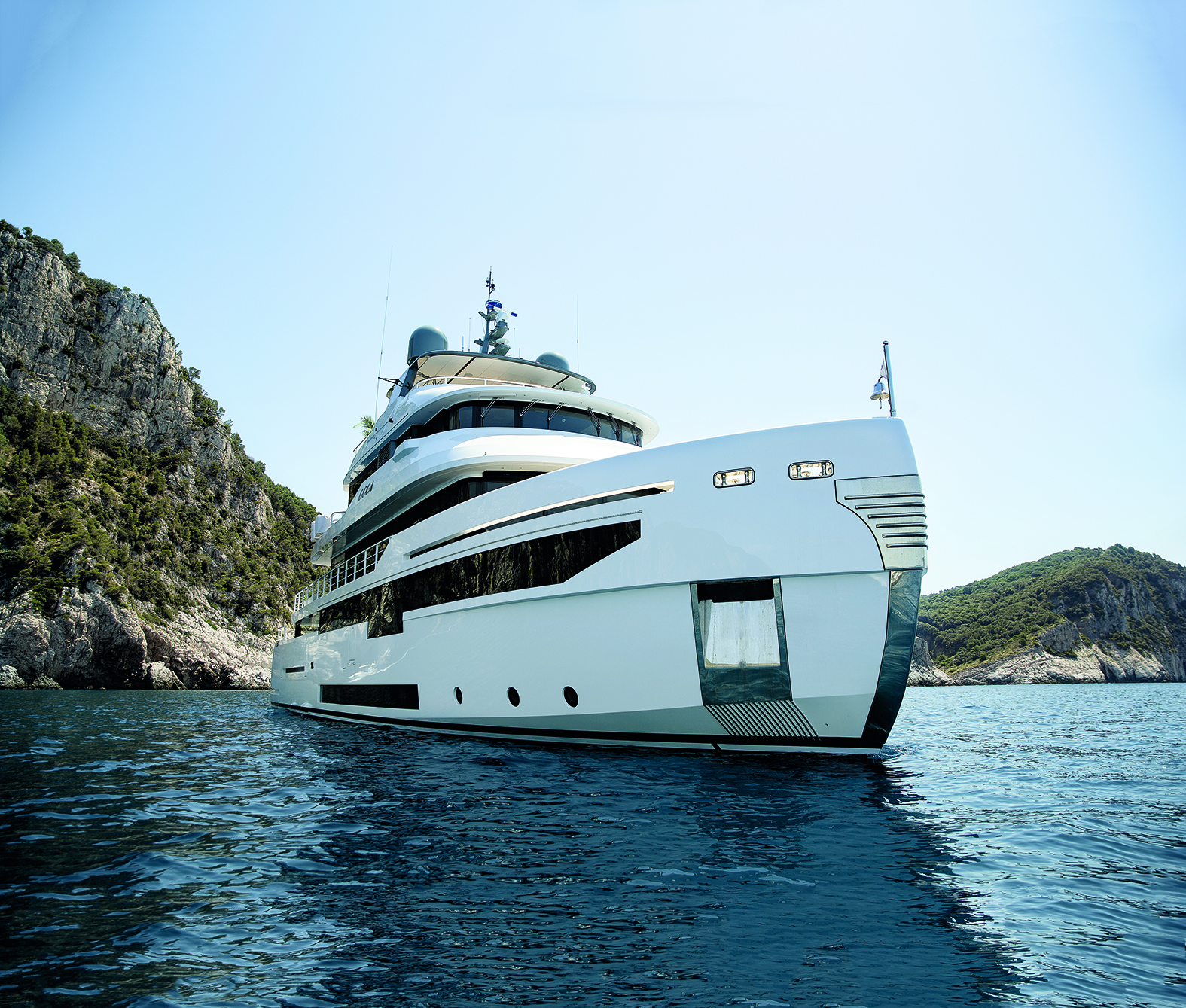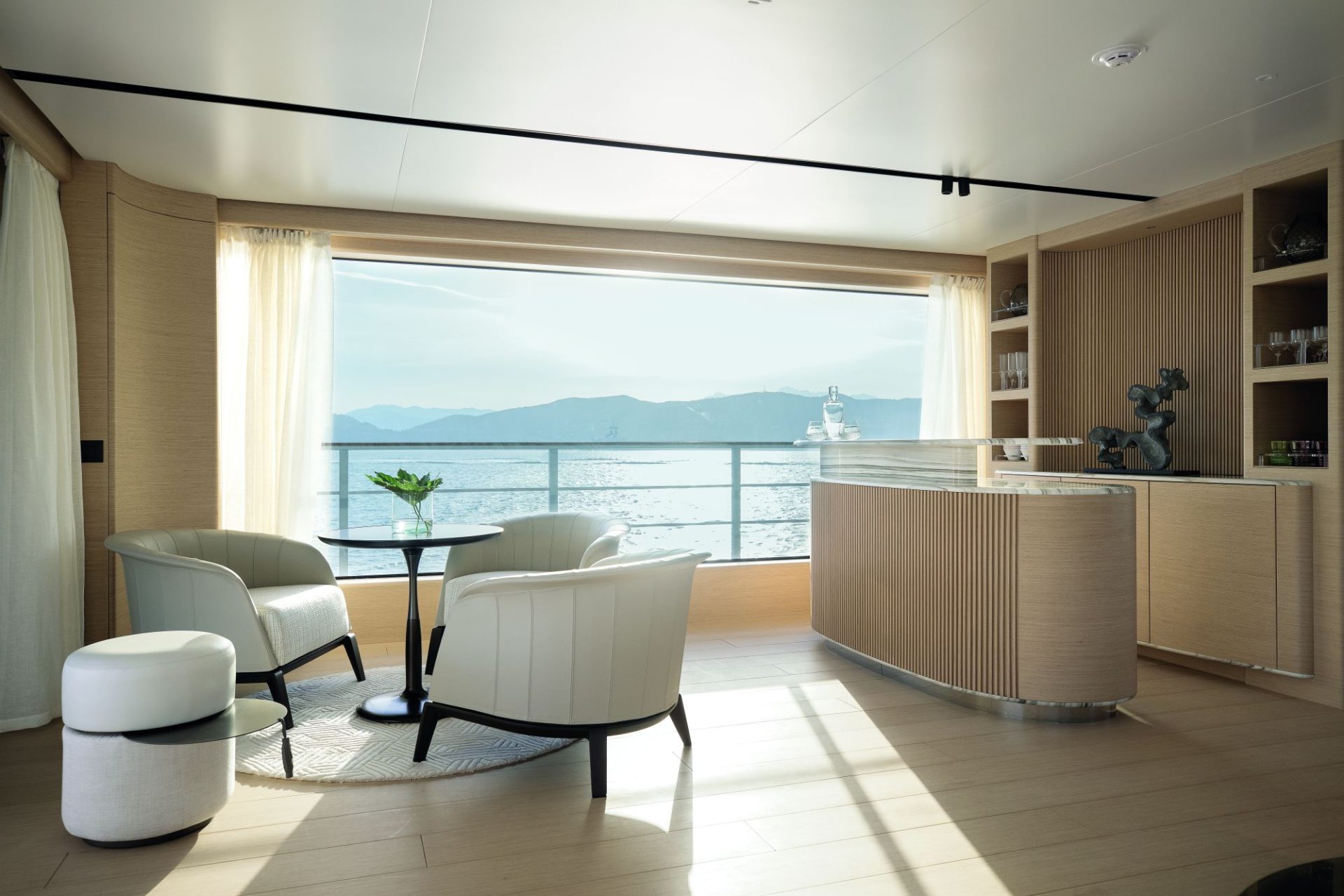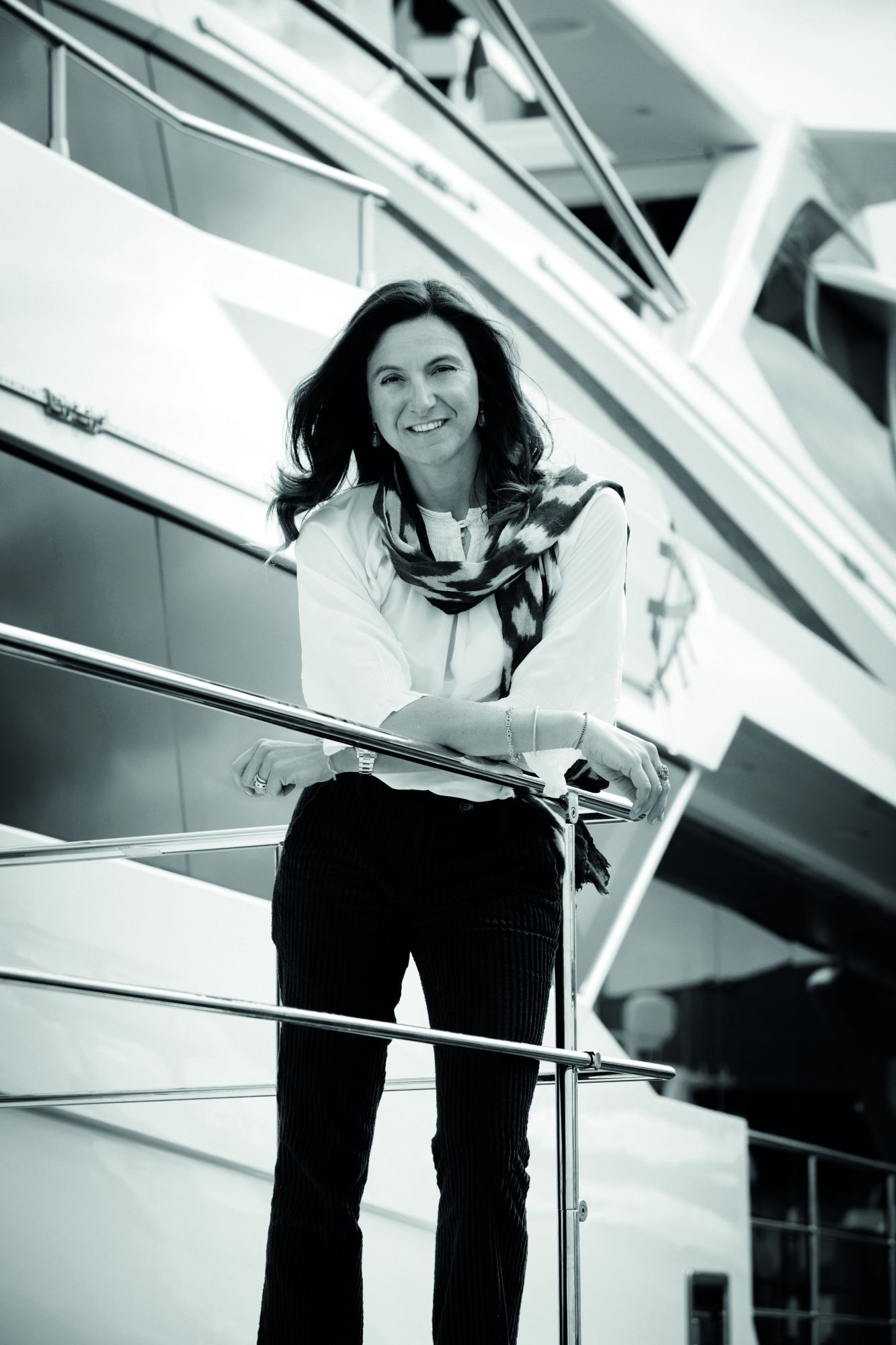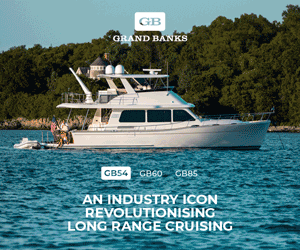Power Play: Giovanna Vitelli
As former vice president and now Chairwoman of the Azimut|Benetti Group, Giovanna Vitelli is taking an increasingly prominent role in driving the company and its popular brands forward. Ocean caught up with Vitelli during the Cannes Yachting Festival for a one-on-one aboard the new B.Yond 37M.
06 April 2023
It is fitting that we interviewed Azimut|Benetti Chairwoman Giovanna Vitelli on board the new Benetti B.Yond 37M (see Ocean issue #104 for our full review).
The B.Yond was designed by the late designer Stefano Righini in collaboration with Giovanna’s father, Paolo Vitelli, Founder of Azimut and Azimut|Benetti’s President, and was intended to be the family yacht until they sold it to a friend a couple of months before delivery.
It’s fitting not just because of the family connection, but because the first B.Yond hull has several interesting features – from a hybrid propulsion system developed with Siemens Energy and a huge gross tonnage for her length to a reformed composite wood finish that reduces waste and domestic glass sliding doors that improve energy efficiency on board.
It speaks to a drive across the range, from the smaller Azimuts to the largest custom Benettis, to consider how best to tackle the problem of sustainability in yachting and how to appeal to a new generation of yacht buyers.
Ocean: The B.Yond 37M is quite radical in many ways. How has it been received, and what proportion of clients have opted for the hybrid propulsion package?
Giovanna Vitelli: It’s a game changer in the distribution of space and liveability on board, and the boat has proven successful – we have already sold a lot. It’s innovative in layout and in propulsion with the hybrid option we developed with Siemens Energy – it costs €2 million more, but of the nine hulls we’ve sold, half of them have gone hybrid.
It’s a sign that clients are interested in hybrid and it’s not just the yard pushing the technology and trying to find the right customer who is prepared to make the investment and take the risk.
The group has been vocal about the measures you’re taking with your new models to improve efficiency. What impact has that had on the emissions?
In the smaller segment up to 40 metres, we’ve invested in carbon-fibre construction to reduce weight and our latest generation hulls, some of which are under patent, offer the best efficiency on the market.
This story was of no interest to anyone in the past, but now it’s becoming a selling point. Our new Azimut Grande 26M and 36M models, for example, don’t offer small 2.8 or 0.4 percent reductions in consumption, they deliver 25 percent reductions.
That makes a difference. While our customers could easily afford an increase in fuel costs, this isn’t the driver anymore. They are more aware; it’s an attitude change. For the larger yachts, particularly over 70 metres, owners frequently push for new technologies now.
We have a long history of diesel-electric and hybrid systems. The 65-metre Benetti Ambrosia in 2006 was our first diesel-electric with Azipods and, a couple of years later, we launched the 50-foot Magellano 50, the first RINA Green Plus certified boat.
At that point, we were putting all the pieces of the hybrid system together ourselves. Our 107-metre Luminosity is still the largest hybrid. Companies that are leaders in their industry have to make these efforts because it is the only way to prepare for when the technology matures. In Siemens Energy, we chose a partner who is big in that segment so we can concentrate on the customer’s needs by not making things too complicated.
Of course, full electric is not possible on large yachts; unlike cars that can recover energy, yachts can only burn energy. Hybrid and electric solutions are just one chapter and not the end of the story for yachts. I believe that alternative fuels, possibly hydrogen, will be an answer, but we have to apply the best technical solutions available today and then keep our studies and R&D and eyes open for the future; this is how you push boundaries forward.
Sustainability is becoming a big issue in yachting, but it’s also leading to a lot of potential greenwashing. How do we counteract that?
There’s so much talk about sustainability. To be serious in this industry, we all have to stick to certain parameters and indices so as to have numbers by which we can be measured.
Some say that because a few pieces of furniture they bought use recyclable leather the boat is sustainable, but this cannot be the story. It’s why we’ve been pushing and publishing data regarding consumption figures on our various models.
What you save in consumption, you save in emissions. If I’m consuming 20 or 30 percent less than another similar-sized boat, this means a similar reduction in CO2. I believe this is the only real, measurable parameter you can judge a shipyard by because it’s a combination of what propulsion you have installed, which might be more in the field of the engine or propulsion manufacturer, and both how efficient your hull is and how light your boat is. This is pure construction knowledge, and the best way to talk about sustainability today.
What can builders do to reduce their construction footprint?
Classification society RINA produced a study that showed that 80 percent of emissions from the industry come from the final product, with the production phase only producing 20 percent.
We are not so much energy burners in shipyards compared to the boats themselves, so it is the right approach to concentrate first and mainly on the yachts we produce.
Of course, there is then the strategy regarding your own production and your suppliers, which in every industry is complicated to assess – the lifecycle assessment, which covers where I buy my energy and where my suppliers buy their materials. That said, we are investing €130 million over the next three years in our shipyards for things like solar panels and other elements that will bring us to 50 percent energy autonomy.
What other onboard systems can help reduce energy consumption on the yachts themselves?
From the big Benettis to the smaller Azimuts, we already use the heat generated by the engines to deliver hot water on board. We would also like to arrive at a system where you can produce all the water, not just for showers but also potable water, to get rid of plastic bottles on board.
There are already producers of such systems; now it’s about getting worldwide warranties to make the systems feasible and working everywhere.
There’s also a lot that can be done with antifouling and what you put on the hull, both to potentially reduce drag, making the hull more efficient, and to reduce pollution; we’re already testing potential coatings.
Then there’s big research into materials. The first step is, we should all be using materials that have been recycled. The next step will be to solve the problem of de-installing and recycling those materials.
We are currently starting studies with a company that supplies leather and fabrics to Tesla, and similar manufacturers, who are a long way ahead in recyclable materials. This industrial-scale approach means you can potentially buy things that are not out of the market in terms of pricing and production capacity.
Do you think we will be forced to change through government legislation if we don’t adapt?
These matters should be addressed even more than they are today by the shipbuilders’ associations and at a global level because it’s the International Maritime Organisation and bodies like that, not just local governments, that are the source of these regulations.
I also believe we should be doing much more together – the industry is so small, relatively, that we should partner more on research into new technology.
If I do the first installation with Siemens Energy, in six months you’ll be doing it too, so I don’t even have a competitive advantage. It makes much more sense to spend less money, to do that research together and to benefit all of us with the new technology.
I don’t see it happening yet, but we need to partner to show commitment in this sector. We no longer have a choice. If I remember how the sea was 30 years ago or when I was a child, it’s so much worse now – we need to focus on that too.
And if the regulations that arrive are prohibiting or limiting, I think that’s the right thing. We shouldn’t struggle against it but rather work to make it happen. The only problem we have is time because regulations often come from people with no clue about where we are at with technology, so if they tell us we have to be emission-free in three years, we don’t have the technology yet – or we’ll all start to build sailing yachts!
Have you been to Australia or New Zealand?
I visited with my parents many years ago, and I have a cousin who lives there. Australia and New Zealand are growing markets, so I definitely want to go back!




